The dual-channel arbitrary waveform generator with a 100 MHz output frequency, 500 MSa/s sampling rate, and 16k Arb waveform length. The AWG generator has equal performance dual channels, and precise and adjustable phase between channels, multiple sweep modes and high-resolution frequency meter function.
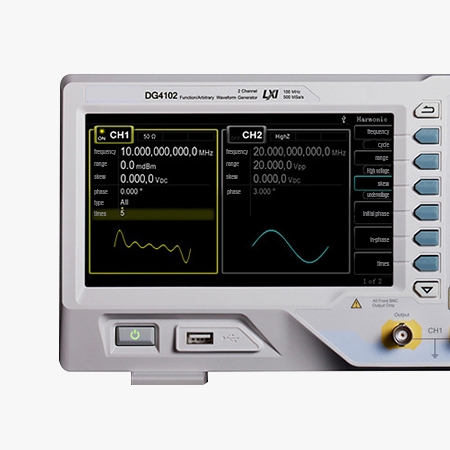
- 7-inch 16M true color TFT LCD screen, displaying waveform
- The arbitrary wave generator uses DDS direct digital synthesis technology, it can generate stable, accurate, pure and low-distortion output signals.
- Up to 150 waveforms/functions can be output: sine wave, square wave, sawtooth wave, pulse wave, noise, Sinc, exponential rise, exponential fall, ECG, Gaussian, haversine, Lorentz, dual audio, harmonics, video signal, radar signal and DC voltage, etc.
- Harmonics with specified order and amplitude can be output, up to 16 harmonics can be output.
Dimension
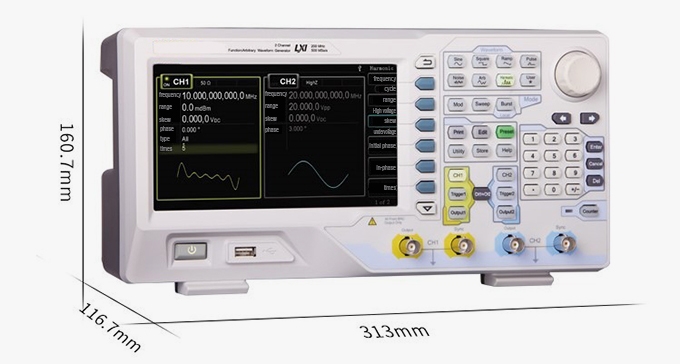
Applications
SISCO arbitrary waveform generator (AWG) is versatile and widely used in various fields. It can simulate complex communication signals, test and develop electronic components and circuits, generate biomedical signals for medical device testing, simulate automotive sensor outputs, and test radar and sonar systems in aerospace and defense. Additionally, AWGs are used in audio equipment testing, acoustic research, educational tools, industrial automation, power quality testing, and renewable energy systems. They are essential for precise and customizable signal generation, making them invaluable for development, testing, and research in multiple domains.
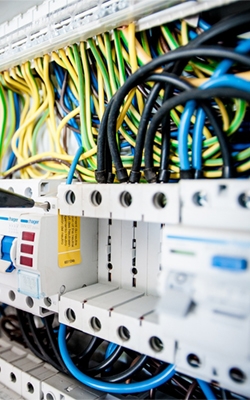
Power Quality Testing
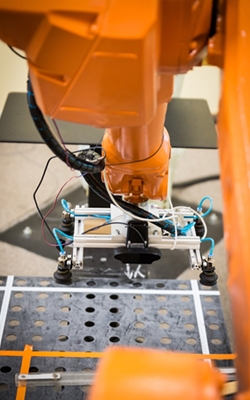
Industrial Automation

Equipment Testing
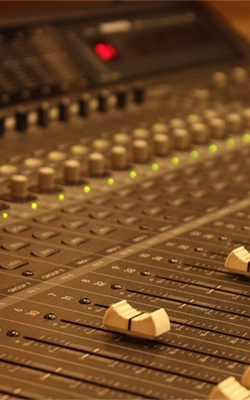
Audio Equipment Testing
| Model | SISCO-AWG-DG4102 |
| Maximum Output Frequency | 100 MHz |
| Sampling Rate | 500 MSa/s |
| Vertical Resolution | 14 bits |
| Number of Channels | 2 |
| Arbitrary Wave Length | 16k |
| Waveform Type | Standard waveforms: sine, square, sawtooth, pulse, noise, dual tone, harmonic (up to 8th harmonic) Arbitrary waveforms: Sinch, exponential rise, exponential fall, ECG, Gaussian, Haversine, Lorentz, dual tone, DC, etc., a total of 150 |
| Sine Wave | 1 μHz-100 MHz |
| Square Wave | 1 μHz-40 MHz |
| Sawtooth Wave | 1 μHz-3 MHz |
| Pulse/Arbitrary Wave | 1 μHz-25 MHz |
| PRBS | 2 kbps-40 Mbps |
| Sequence | 2k-60 MSa/s |
| Noise (-3 db) | 80MHz bandwidth |
| Sine Wave Spectrum Purity | Total harmonics true: <0.1% (10Hz-20Hz, 0 dBm) Phase noise: <-115 dBc/Hz @10MHz (0 dBm, 10 kHz offset) |
| Square Wave Rise/Fall Time | Typical (1 Vpp) ≤10 ns |
| Signal Jitter | ≤5 MHz: 2 ppm+500 ps >5 MHz: 500 ps |
| Output Amplitude (50Ω Termination) | ≤20 MHz: 1 mVpp-10 Vpp ≤60 MHz: 1 mVpp-5 Vpp ≤120 MHz: 1 mV-2.5 Vpp >200 MHz: 1 mV-2.5 Vpp |
| Modulation Type | AM, AF, PM, ASK, PSK, BPSK, QPSK, 3FSK, 4FSK, OSK, PWM |
| Working Mode | Continuous, burst, swept, modulated |
| Pulse Train Characteristics | Carrier frequency 2 mHz-10 MHz/25 MHz/35 MHz/50 MHz/70 MHz/100 MHz Pulse count: 1-1M or infinite; Trigger source: external, internal, manual |
| Pulse Train Characteristics | Carrier frequency 2 mHz-10 MHz (or at its highest frequency) Pulse count: 1-1M or infinite; Trigger source: external, internal, manual |
Detail
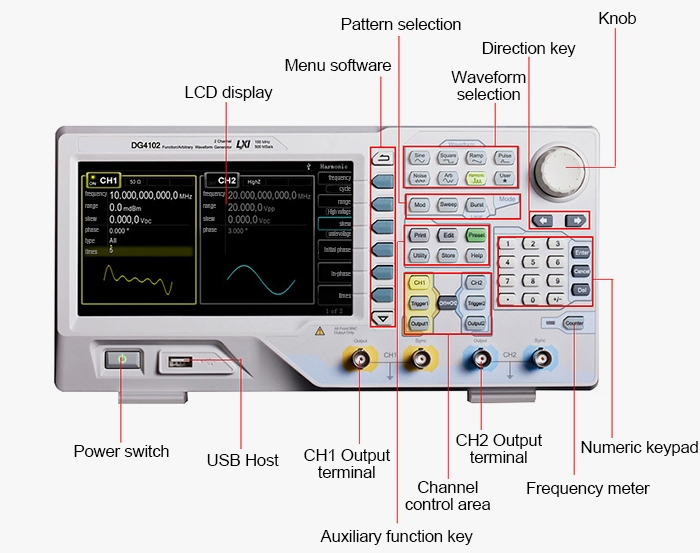
Q1: What is an Arbitrary Waveform Generator (AWG)?
A1: An Arbitrary Waveform Generator (AWG) is a device that generates user-defined, complex waveforms. It allows for the creation and output of a wide variety of signal shapes, beyond standard sine, square, and triangle waves.
Q2: How does an AWG differ from a standard function generator?
A2: Unlike standard function generators, which produce fixed waveforms like sine, square, and triangle waves, AWGs can produce any waveform defined by the user. This makes AWGs more versatile and suitable for complex testing scenarios.
Q3: What is the importance of the sampling rate in an AWG?
A3: The sampling rate in an AWG is crucial because it determines how accurately the waveform can be represented. A higher sampling rate provides better resolution and fidelity, ensuring the generated waveform closely matches the desired signal, which is essential for precise testing and measurement.
Tips: What is the Importance of Memory Depth in an arbitrary waveform generator (AWG)?
Memory depth in an Arbitrary Waveform Generator (AWG) is a critical specification that significantly impacts the capabilities and performance of the device. Here are several reasons why memory depth is important:
Waveform Length and Complexity
- Longer Waveforms: Memory depth determines the length of the waveform that can be stored and generated. A deeper memory allows for longer waveforms, which is essential for applications requiring extended signal duration.
- Complex Waveforms: With greater memory depth, more complex waveforms can be stored. This is crucial for accurately simulating real-world signals that have intricate patterns and variations over time.
Resolution and Detail
- Higher Resolution: More memory allows for higher resolution in waveform generation. This means that each point in the waveform can be defined more precisely, resulting in a more accurate representation of the desired signal.
- Fine Detail: Detailed features within a waveform, such as sharp transitions or small variations, require more memory to store accurately. This is important for applications that need precise signal reproduction.
Repetition and Modulation
- Repeating Patterns: For waveforms that have repeating patterns, sufficient memory is needed to store the entire pattern without truncation. This ensures that the repeated signal is continuous and accurate.
- Modulated Signals: Complex modulation schemes, such as frequency or amplitude modulation, require deep memory to accurately store and reproduce the modulated waveform over time.
Thank you for buying industrial test and measurement equipment on SISCO.com, all products sold by SISCO and the partner cover a 12 months warranty, effective from the date of receiving the products.
What is covered?
SISCO is responsible for providing free spare parts, and free technical support to assist the customer to repair the defective products until the problem is solved.
What is not covered?
- Product purchased from anyone other than a SISCO store or a SISCO authorized reseller.
- Expendable parts.
- Routine cleaning or normal cosmetic and mechanical wear.
- Damage from misuse, abuse or neglect.
- Damage from use of parts other than SISCO approved.
- Damage from use outside the product’s usage or storage parameters.
- Damage from use of parts not sold by SISCO.
- Damage from modification or incorporation into other products.
- Damage from repair or replacement of warranted parts by a service provider other than a SISCO authorized service provider.
- Damage caused by the application environment not meeting the product usage requirements and the failure to perform preventive maintenance.

